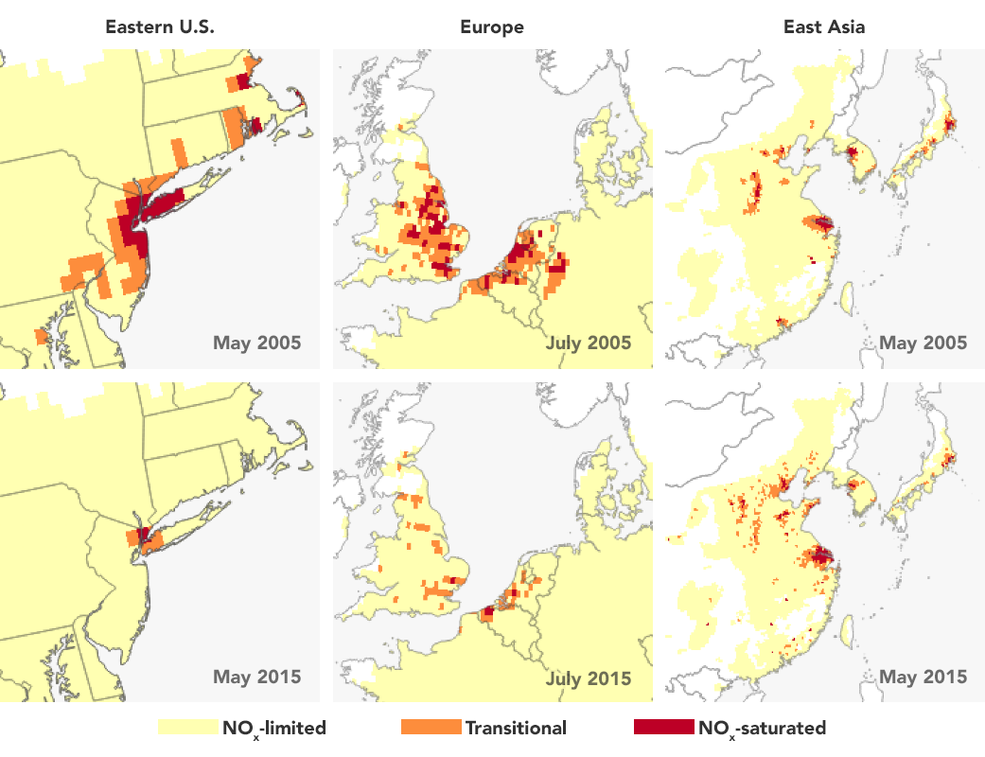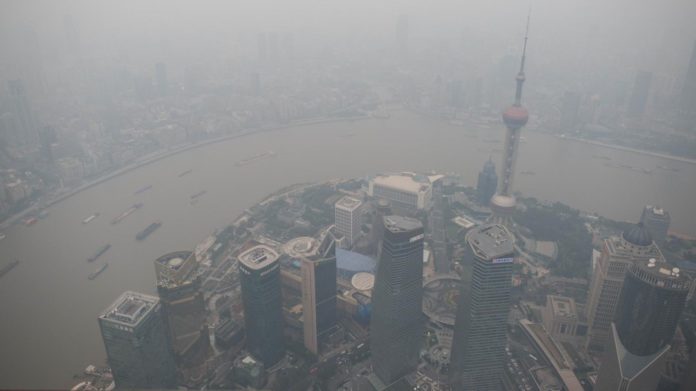Ozone contamination close to Earth’s surface is one of the principal elements of late spring brown haze. It mainly occurs due to an imbalance between the production and destruction of stratospheric ozone is tipped in favor of destruction. Although, there is no way to directly measure ozone pollution from space due to the abundance of ozone higher in the atmosphere.
Now, Nasa scientists have devised a way to use satellite measurements of the precursor gases that contribute to ozone formation to differentiate among three different sets of conditions that lead to its production.
The ozone layer protects the Earth from harmful ultraviolet radiation. But its pollution leads to health hazard including respiratory problems like asthma and bronchitis.

Credits: NASA’s Earth Observatory /Josh Stevens
Lead author Xiaomeng Jin at the Lamont-Doherty Earth Observatory at Columbia University in Palisades, New York said, “We’re using satellite data to analyze the chemistry of ozone from space.”
“With a combination of computer models and space-based observations, we used the concentrations of ozone’s precursor molecules to infer whether ozone production increases more in the presence of NOx, VOCs, or a mix of the two, for a given location.”
For further understanding their impacts on ozone formation, scientists investigated whether VOC or NOx was the ingredient that most limited ozone formation. They suggest on the off chance that outflows of that atom are decreased, at that point ozone development will be diminished—basic data for air quality chiefs.
Co-author and atmospheric chemist Arlene Fiore at Lamont-Doherty said, “We are asking, ‘If I could reduce either VOCs or NOx, which one is going to get me the biggest bang for my buck in terms of the amount of ozone that we can prevent from being formed in the lower atmosphere?’”
Jin reported, “As scientists mainly focused on North America, Europe, and East Asia during the summer months, the findings suggest the cities in these regions are more often VOC-limited or in a transitional state between VOC and NOx-limited. Moreover, the 12-year data recorded from 2005 of satellite observations show that a location’s circumstances can change. It means future NOx reductions will likely further decrease ozone production.”
